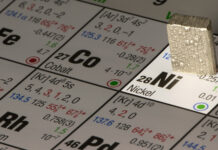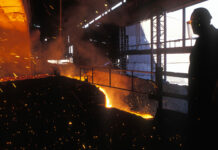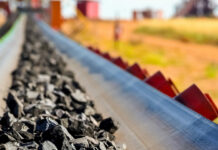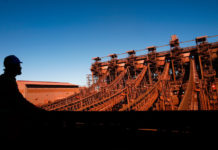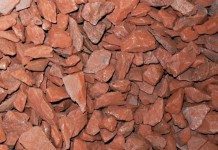
THE steel market may have taken a turn for the better in the first three months of this year, but the extent to which ArcelorMittal South Africa (AMSA) is benefiting from it is unknown.
That’s the upshot of some evasive responses provided by acting AMSA CEO, Dean Subramanian, earlier this month when asked by analysts whether the company generated free cash in the first quarter.
The company had earlier issued a first quarter production update saying that steel prices had improved – by about $86 per tonne for hot rolled coil (HRC) – which was enough to keep the group’s Saldanha Works in business.
“The bulk of our products are cash generative,” Subramanian said. Asked if this was also true after capital expenditure, he replied: “The bulk of our products are EBITDA positive”. He declined to expand and also censured another analyst who asked if the company was producing a net profit. “This is an operational review,” said Subramanian.
The question was worth asking (and responding to) because AMSA had said in its first quarter commentary that the company’s survival could not be guaranteed by an improved market alone.
“Shareholders are reminded that the future sustainability of the company is highly dependent on resolving all outstanding matters,” it said.
This included “… localisation of steel for government infrastructure projects, tariff protection … as well as the implementation of safeguards and a fair pricing mechanism”.
Subramanian said, however, the company wouldn’t be “sitting around” waiting for Government bail-outs. It is working on a reline of its Saldanha Works, at a cost of up to R100m, which would see the operation through for the next four years at capacity of about 80,000 tonnes per month.
It had also earmarked improving efficiencies at the plant by sourcing cheaper energy. Electricity costs at Saldanha increase to 30% of total costs from 8% in summer as the winter tariff kicked in. This makes it crucial that AMSA secure alternative energy supply. It’s looking to tie up a gas-to-electricity project using liquified natural gas if support for the venture can be found.
Its Vanderbijlpark Works, however, looks the most vulnerable as it’s not possible to switch off sections that are losing money. Owing to the scale of economies, the entire works has to operate.
This leaves Subramanian little option but to pull in costs further. “We are progressing very well at Vanderbijlpark,” he said. “We have to run it at full throttle. It is still viable at prices today and we have not retrenched anyone.”
Initiatives are in place to reduce the base cost of Vanderbijlpark’s hot rolled coil by between $30/t and $50/t. This would be achieved partly through the sourcing of cheaper material, and lowering energy costs. “We are also looking at reducing billet cost at Newcastle,” said Subramanian.
The evidence from the share market is AMSA might be turning the corner. AMSA shares have gained 125% in the first three months of 2016, although they have been under pressure during May.
One interesting side question is whether AMSA should stay listed at all as a result of ast year’s shares for cash offering. It was so heavily underpinned by parent company ArcelorMittal that the group’s free-float is heavily reduced.
Subramanian – who will be replaced in the second half of the year by incumbent Wim de Klerk, currently CFO at Exxaro Resources – said a study had actually been done on whether to stay listed. AMSA’s putative black economic empowerment deal is the key reason why the company should remain public, he said.







